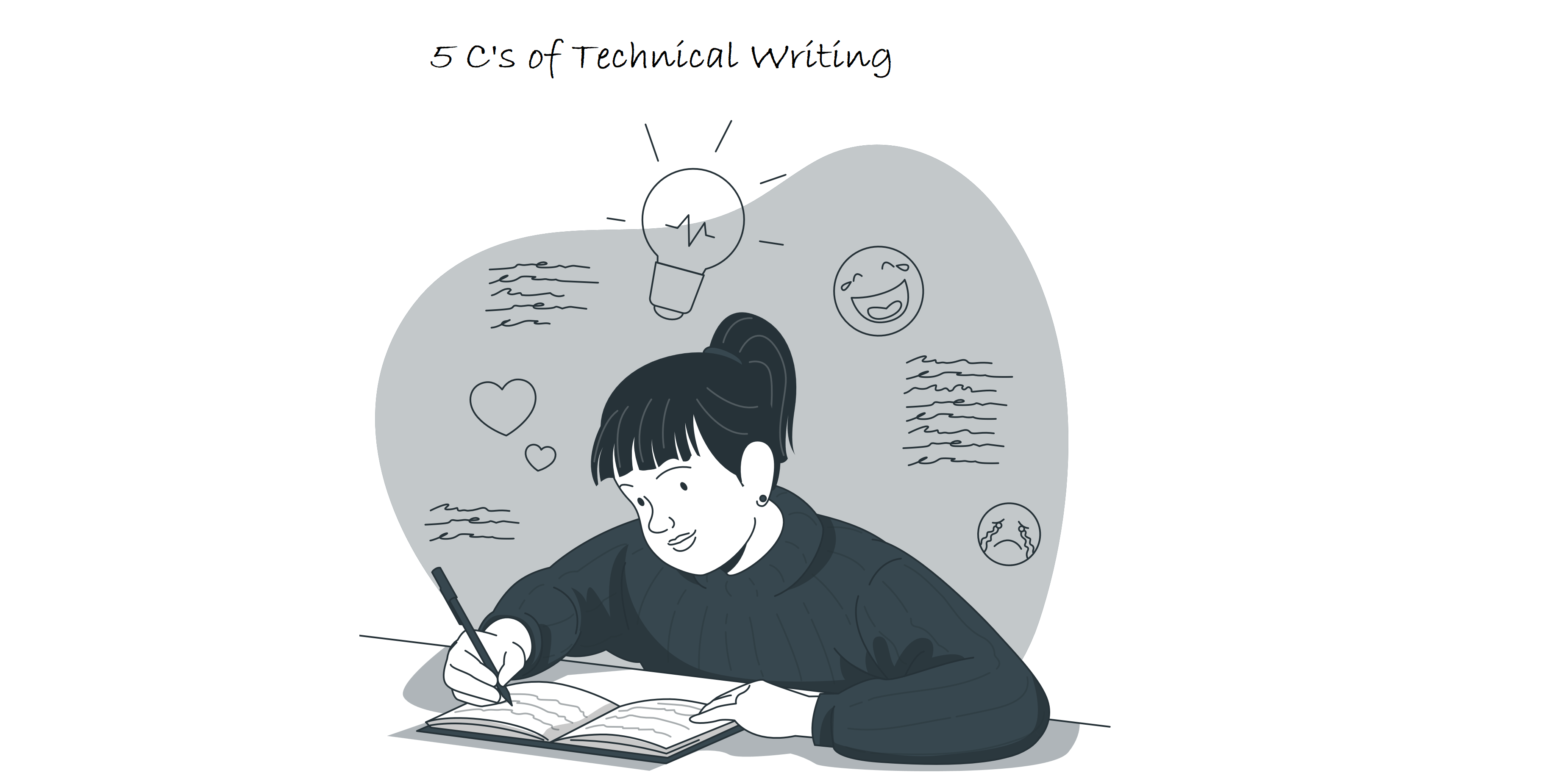5 C’s of Technical Writing¶

Technical writing is writing about a technical subject for a particular audience with a stated purpose. The technical information should reflect what user expect and want to do with it.
How will you categorize whether the information is of good quality or not?
The technical information is said to be of good quality, if it is comprehensible, usable, and easy to find.
And, how will you achieve that?
Follow these 5 C’s, to get the most of your writing and effectively convey the information you intend it to:
- Clarity
- Conciseness
- Cohesiveness
- Completeness
- Correctness
Clarity¶
-
The first C is Clarity. The technical information is said to be clear when the reader understand it for the first time.
-
In order to be clear, use technical terms only if they are necessary and appropriate.
-
Try to focus on the meaning, avoid the technical jargons, if you can. Use words which have one and clear meaning.
-
Keep your sentences short and meaningful.
-
Define terms ( acronyms and other abbreviations) that are new to readers or are used differently from what they expect.
-
Try to use the term after you have explained it in a meaningful way and highlighted it.
-
Include an example in the definition as it helps readers understand terms and makes the definition easy and clear to understand.
Conciseness¶
-
Be concise!
-
Repetition is good when it appropriately emphasizes and reinforces important points. Repetition is also good when you don’t know where users might enter your information, as is the case on the Web. Repetition is bad as irrelevant details waste reading time and might give a wrong impression about what is important.
-
Hence, make every word count. Avoid being verbose in writing. Try to provide crisp, short, and succinct information.
-
You can use minimalist approach(i.e. reduce irrelevant information and provide the reader with essentials only.)
-
Try to be brief yet comprehensive and relevant.
Cohesiveness¶
-
The topic should be related to each other. The reader should not get lost in the information. The content should be placed in such a manner that the reader can relate to it. It should be easy to follow.
-
Your writing is cohesive, if the reader can understand your information and transit smoothly from one point to another with minimal effort.
-
If you describe one of the four benefits of a product in terms of a problem that the product solves, describe the other three benefits in similar manner.
-
Use parallelism while listing items.
-
Try to integrate lists, tables, figures, or examples, with a sentence and provide meaningful captions to it.
Completeness¶
-
Completeness refers to the information about the subject i.e. complete, relevant and is in sufficient detail.
-
Follow the thumb rule of paragraph according to which ”a good paragraph should have at least three sentences – one to introduce the subject, one to develop the subject, and one to summarize the additional information and lead into a new subject.”
-
Conduct audience analysis, so that you can formulate the depth of detailing required in your information.
-
The information is complete if it is well organized and task-oriented. Cover the information that readers need for doing tasks.
-
Always rely on a thorough task analysis rather than your own assumptions. Every information you put should be a validated one.
-
Mention not only common occurrences, but also the uncommon ones, especially if readers need special information to handle the uncommon situation such as errors while running software such as in your end user documentation.
Correctness¶
-
You must provide information accurately and free of errors. If the information provided is not correct, there are chances that you lose credibility and trust of your readers.
-
In order to achieve correctness in your writing, have it reviewed as many times as necessary to ensure that it is accurate by the time when you publish the information.
-
Accuracy problems can result when you include graphics that show all or part of the user interface if the interface changes after the information is finalized. Therefore make sure interface descriptions are consistent with the actual interface.
-
Use a grammar-checking tool for typographical and grammatical errors.
-
Increase your knowledge of how your users do their jobs so that you can develop accurate information that would make their jobs easier and thus address it in your writing also.